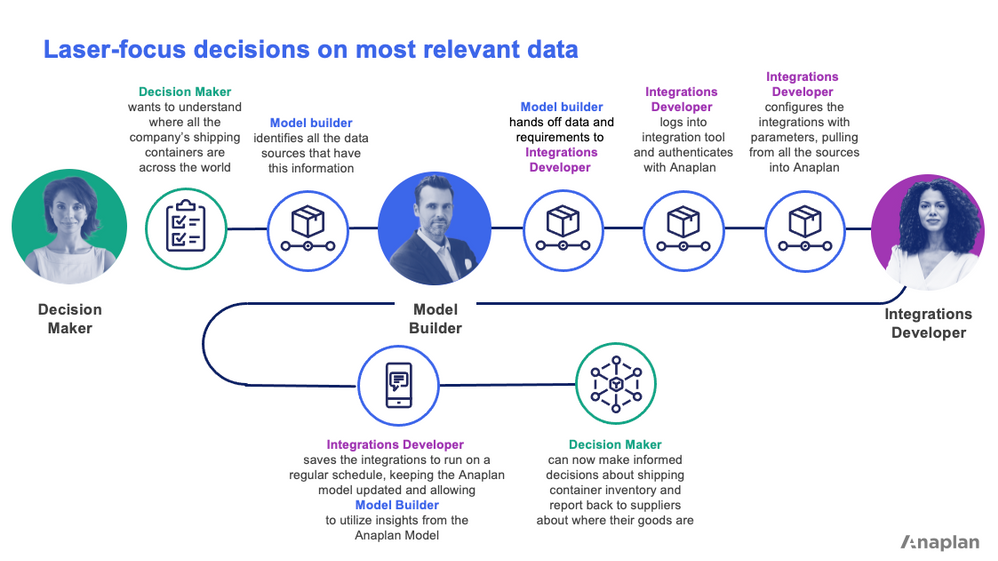Welcome! We’re so glad you’re here. We’re shining the spotlight on Anaplan's Transactional APIs and we’ve crafted this blog post to cover the basics like what it is, who is it for, and a high level overview of some use cases for them.
Let’s get right to it!
What are Anaplan Transactional APIs?
Data integration is a key component in Anaplan’s vision of creating a cloud-native, enterprise-grade Connected Planning and performance management platform. We’ve created these APIs to help customers access and process data quickly, as well as drive more agile integrations. For an overview of our APIs, go here.
Transactional APIs allow users to:
- Efficiently access Anaplan data without using Export/Import Actions
- Gain deeper insights into Anaplan workspaces and models
- Zero in on critical data points and make targeted updates
Who is it for and Why?
There are three main personas that can benefit the most from Anaplan’s Transactional API’s:
- Integrations Developers, who can now design optimal ways to connect Anaplan with other systems. Using the APIs will reduce setup time and reduce business users’ reliance on them when using the Anaplan platform in conjunction with other tools.
- Model Builders, who can create high-value models by leveraging these integration capabilities to keep their models updated with external data. This will also let them read specific sets of data and publish Anaplan data to external systems.
- Decision Makers, who are responsible for making the decisions based on the credible data that these APIs can provide to their teams.

Use Case Examples?
Anaplan’s Transactional APIs have a wide range of use cases. You can find a couple of examples of how certain organizations and industries would utilize them.
- Supply chain and demand planning for Biopharmaceuticals : Maintaining module hygiene requires a lot of intensive coding work. With Transactional APIs and metadata APIs, users can regularly check on modules to detect and monitor entities that are no longer needed, thereby streamlining maintenance and reducing heavy scripting requirements on the developers’ end.
- Data Migration for Financial Services: Data migration can be a painstaking process when managed manually. A routine update to switchover period of multiple model versions requires at least five hours of IT resources and can result in errors. Transactional APIs can be configured to automatically update switchover period in all model versions at specific times, significantly reducing the amount of manual effort needed when new actuals arrive each month.
Guidelines and Considerations
Before you get started with Transactional APIs, here are a few things to remember:
- Familiarity with REST, Python scripting, Anaplan APIs, and Anaplan Modeling concepts, and authentication tokenization is needed to use these APIs successfully.
- As of May 2021, the Transactional APIs support data volumes of up to 1M cells. We hope to expand our APIs to support larger volumes in the near future.
- While the Transactional APIs currently do not provide connections to external systems, customers can leverage other data integration solutions to connect to Anaplan.
Now that we understand the basics, let's move on to more practical examples with our Part 2: Use Cases for Transactional APIs:
- Retrieve Item IDs, Names and Codes
- Automate reporting & alerts on Workspace/Model sizes
- Automate index count on Numbered Lists
- Automate Calendar updates
Then dive into Part 3 about Data Virtualization and finally, if you are interested in Chat Bots, check out our articles for Anaplan and AWS or Anaplan and GCP.
Got feedback on this content? Let us know in the comments below.
Contributing authors: Pavan Marpaka, Chanaveer Kadapatti, Andrea Denise Sy, and Christophe Keomanivong.